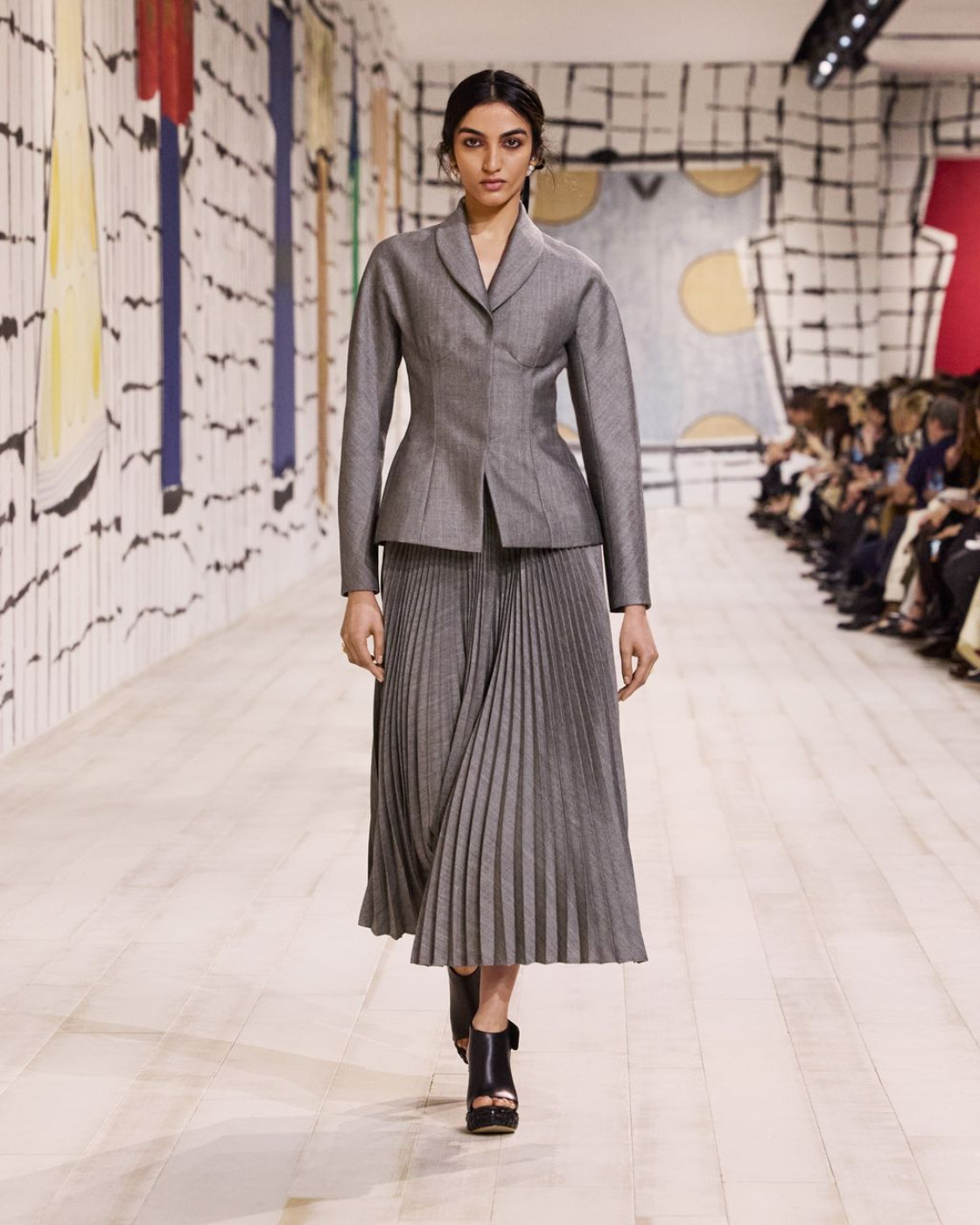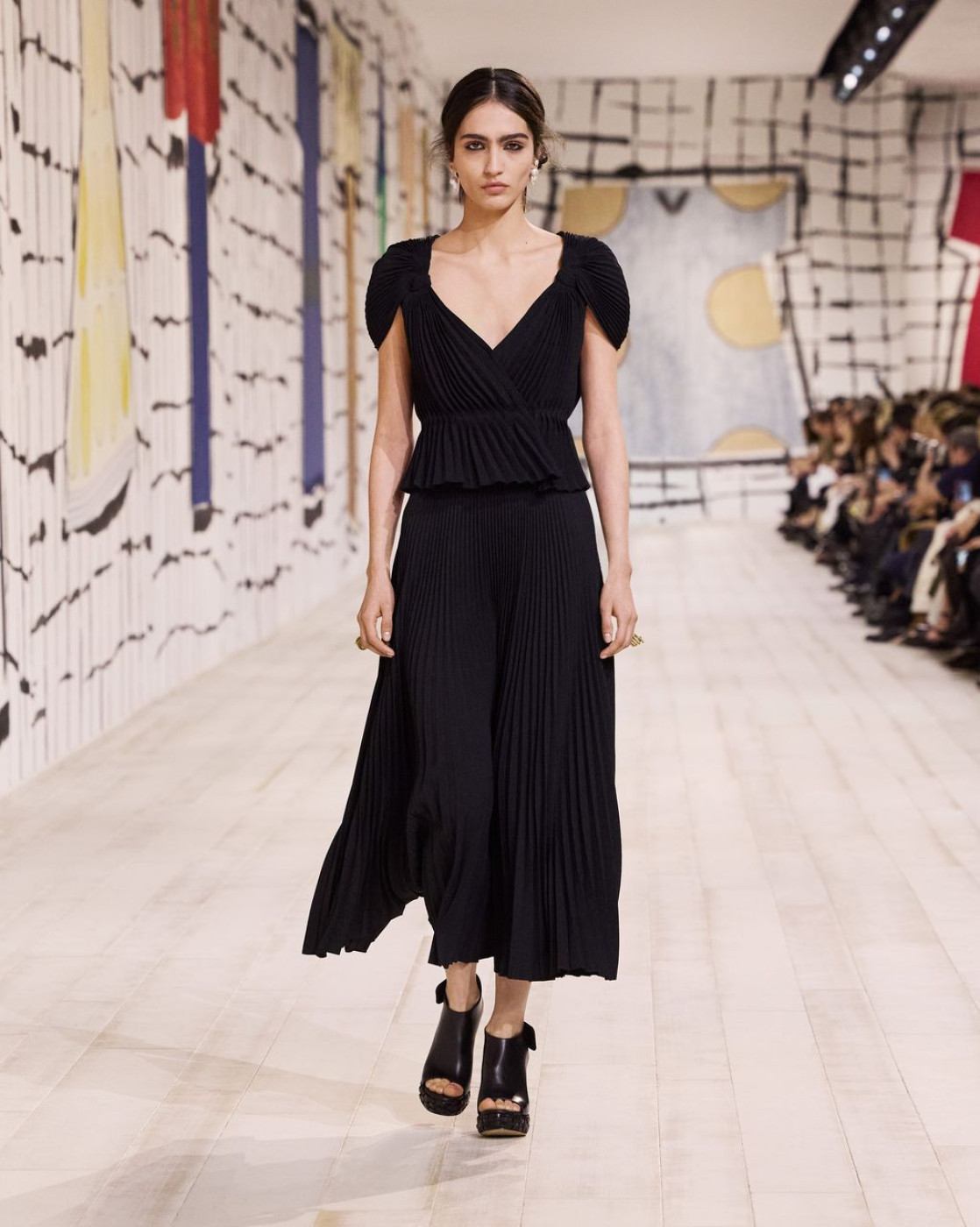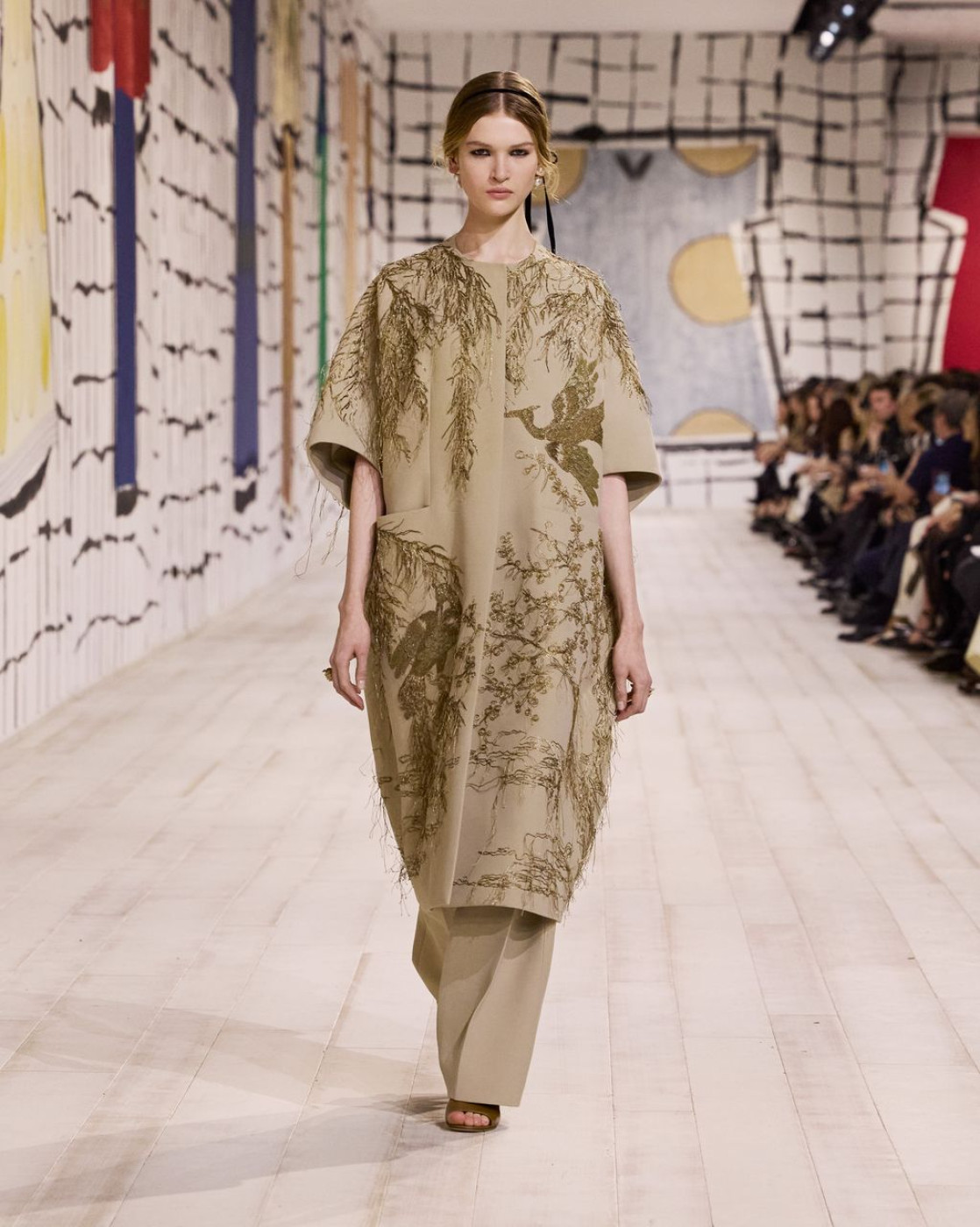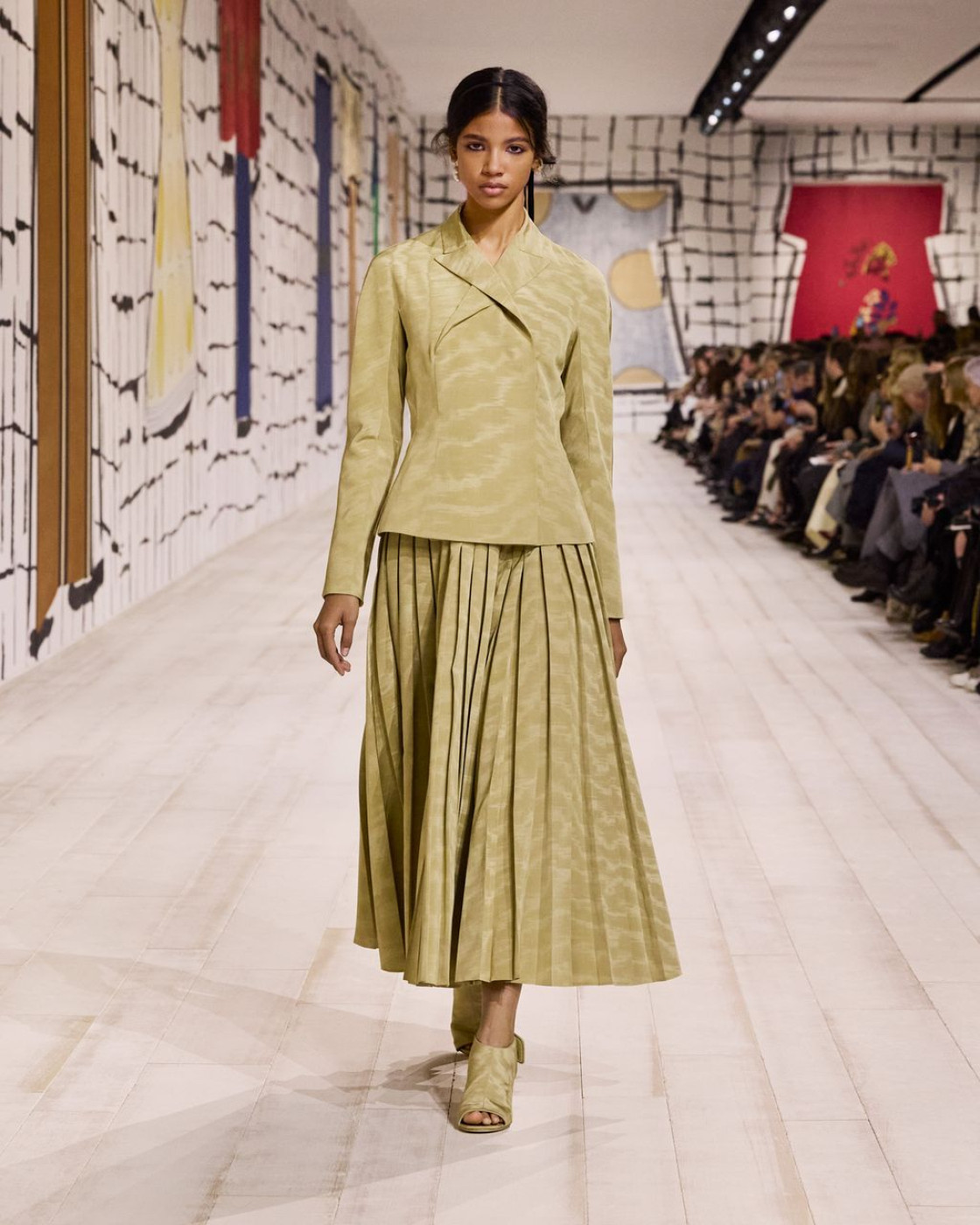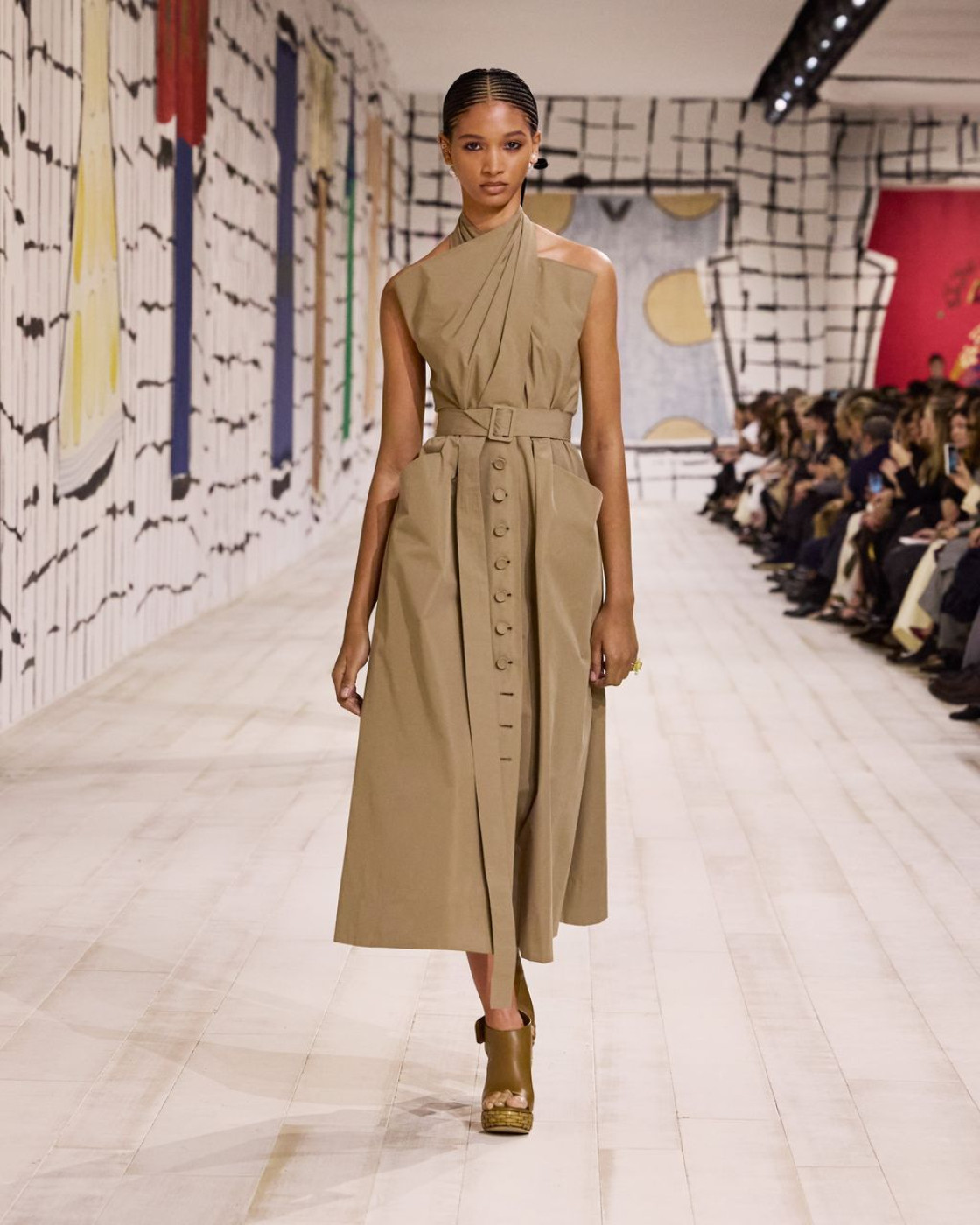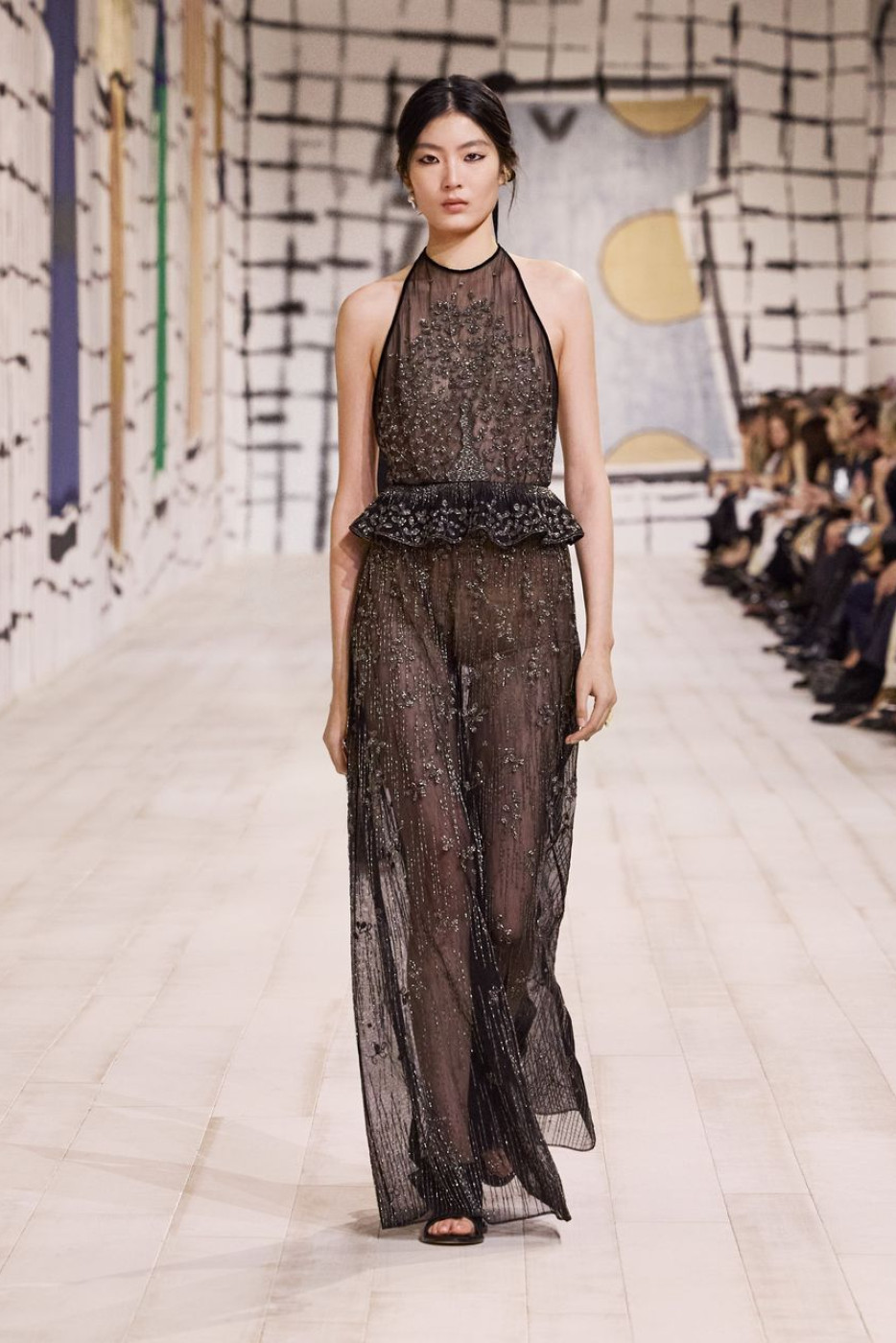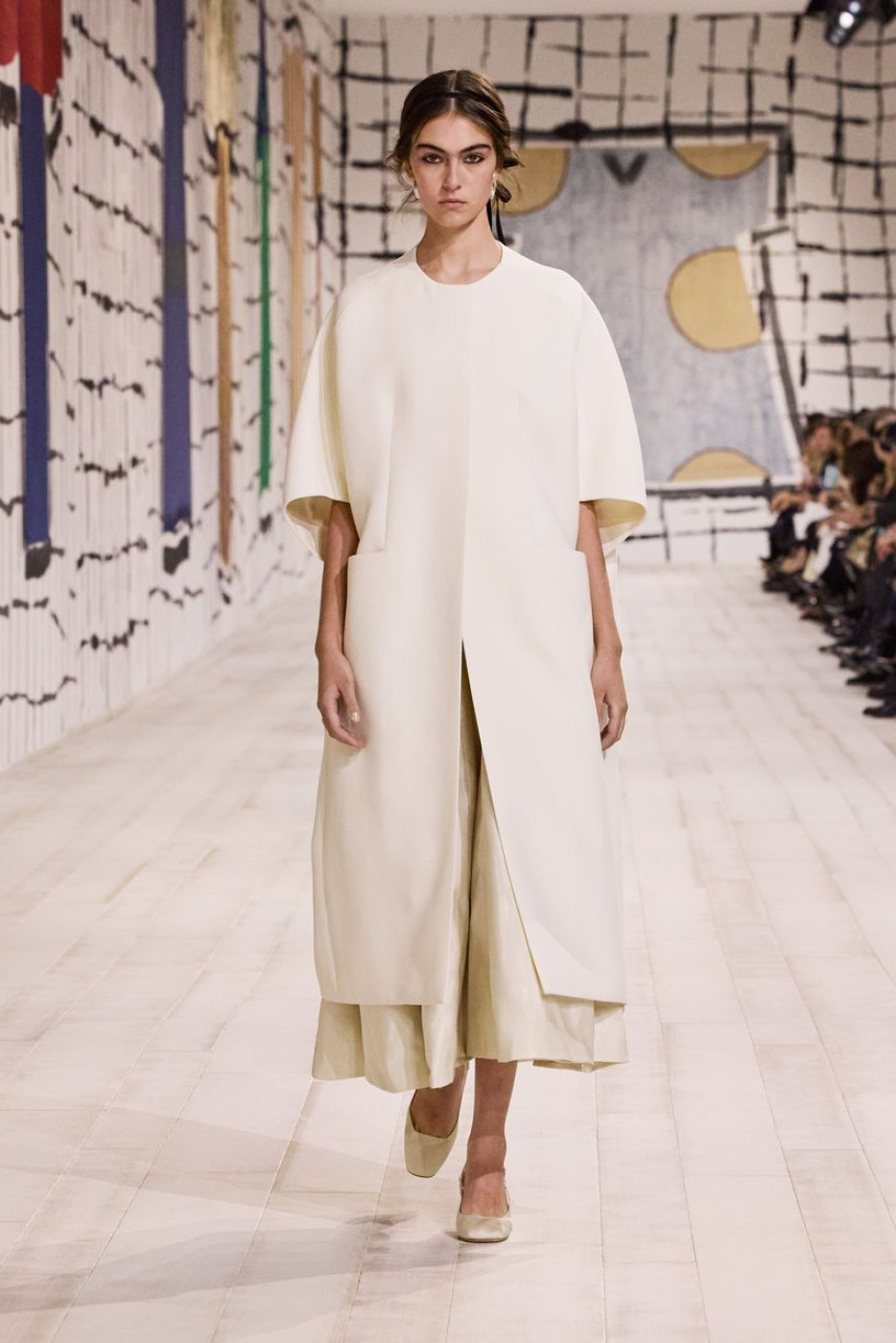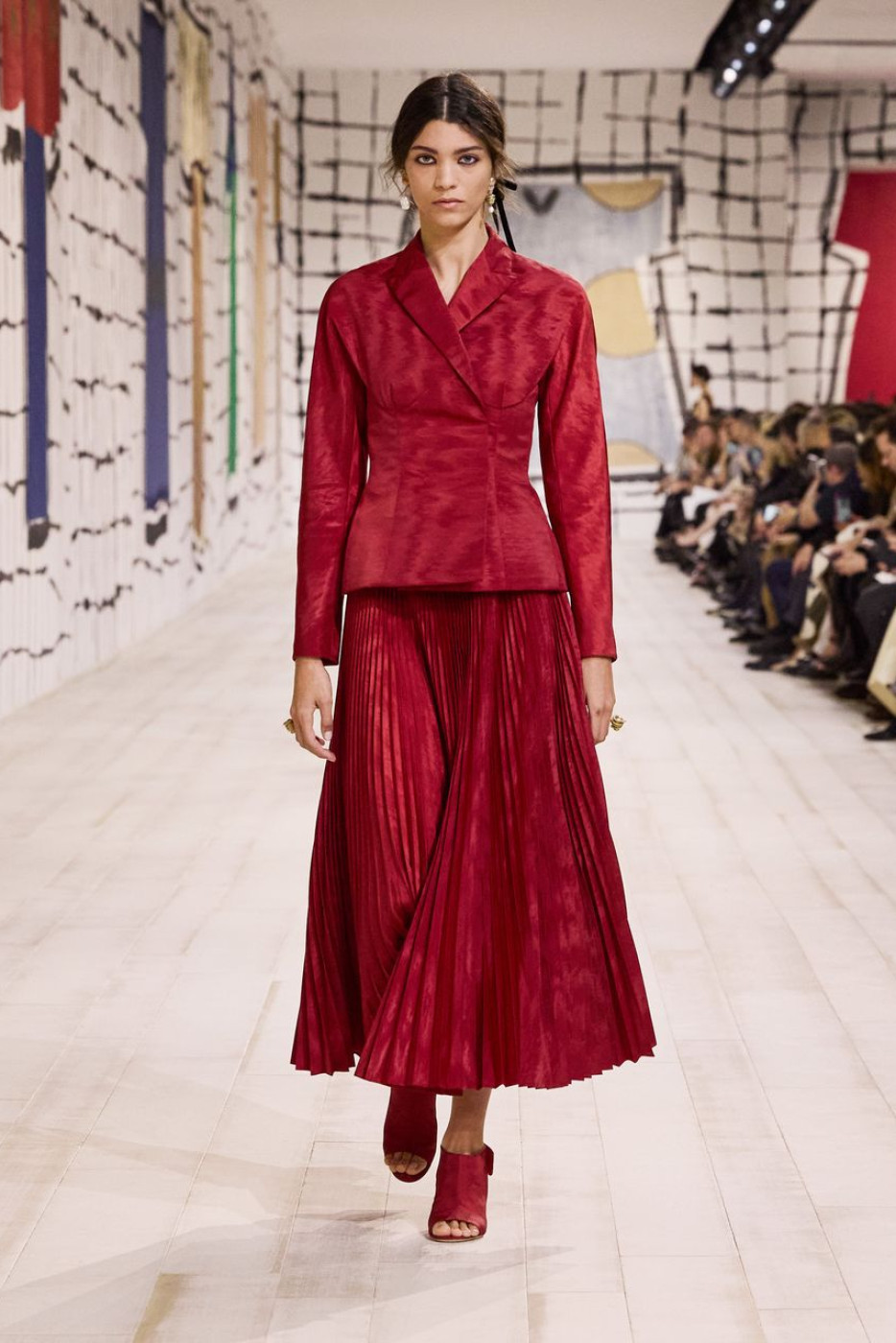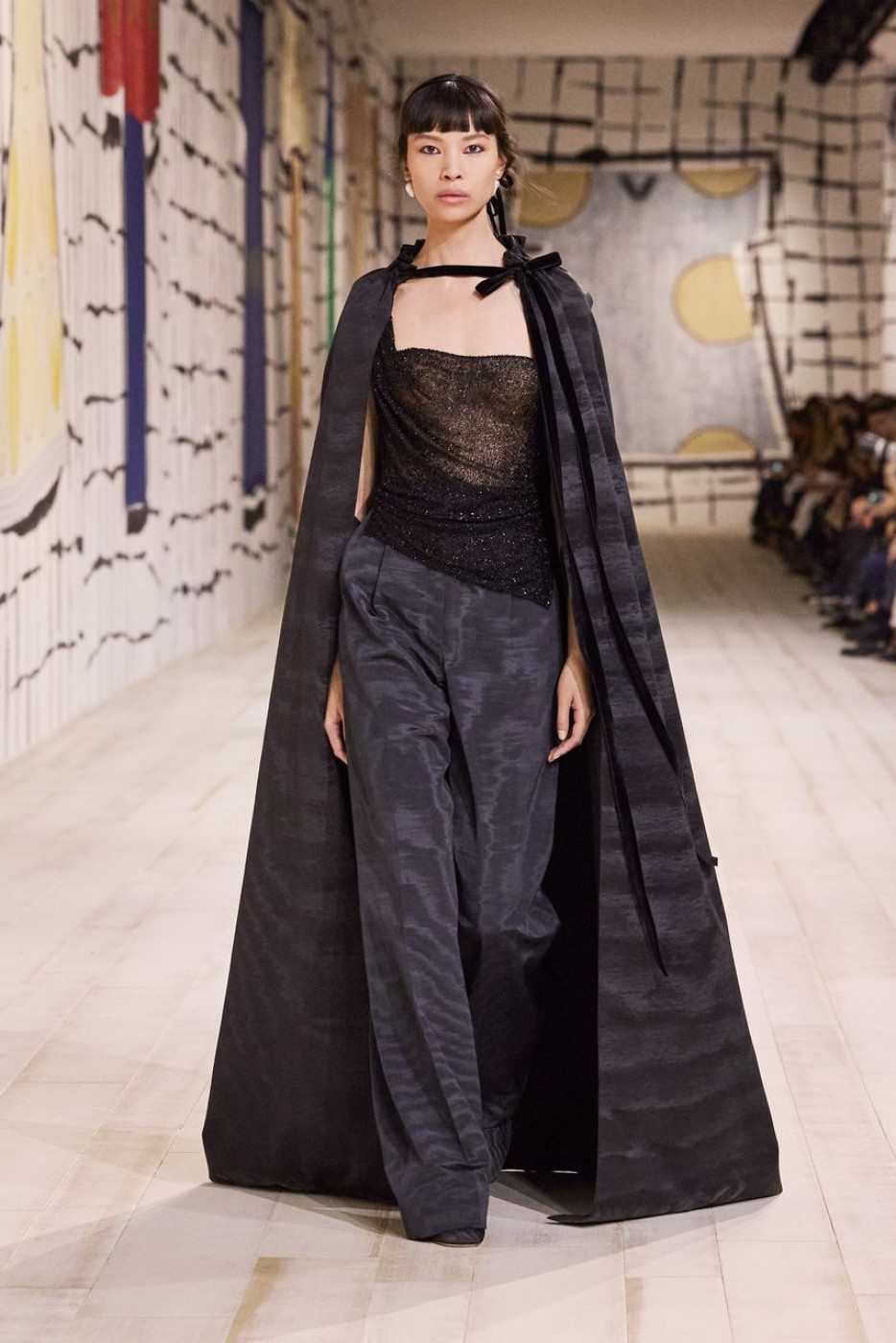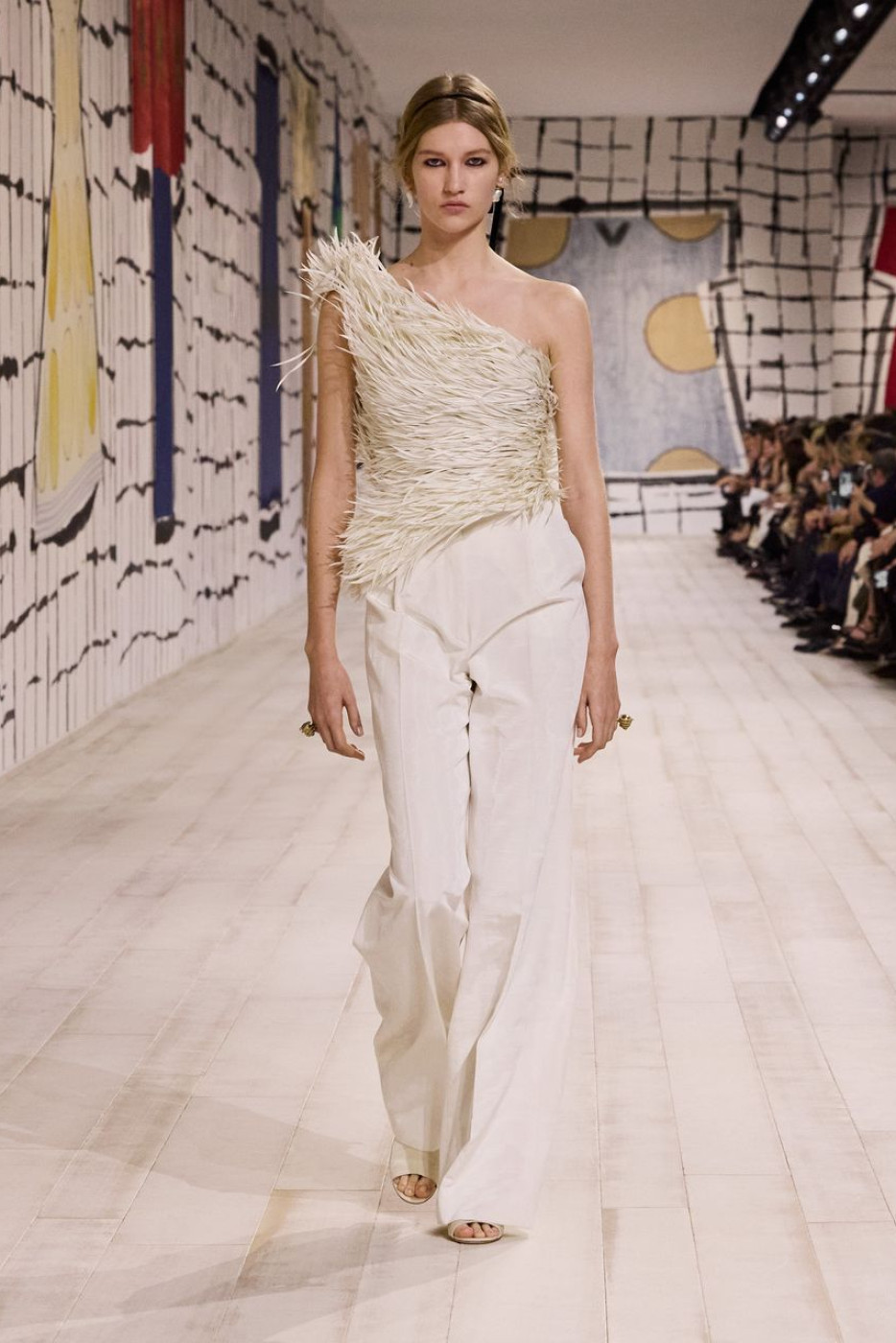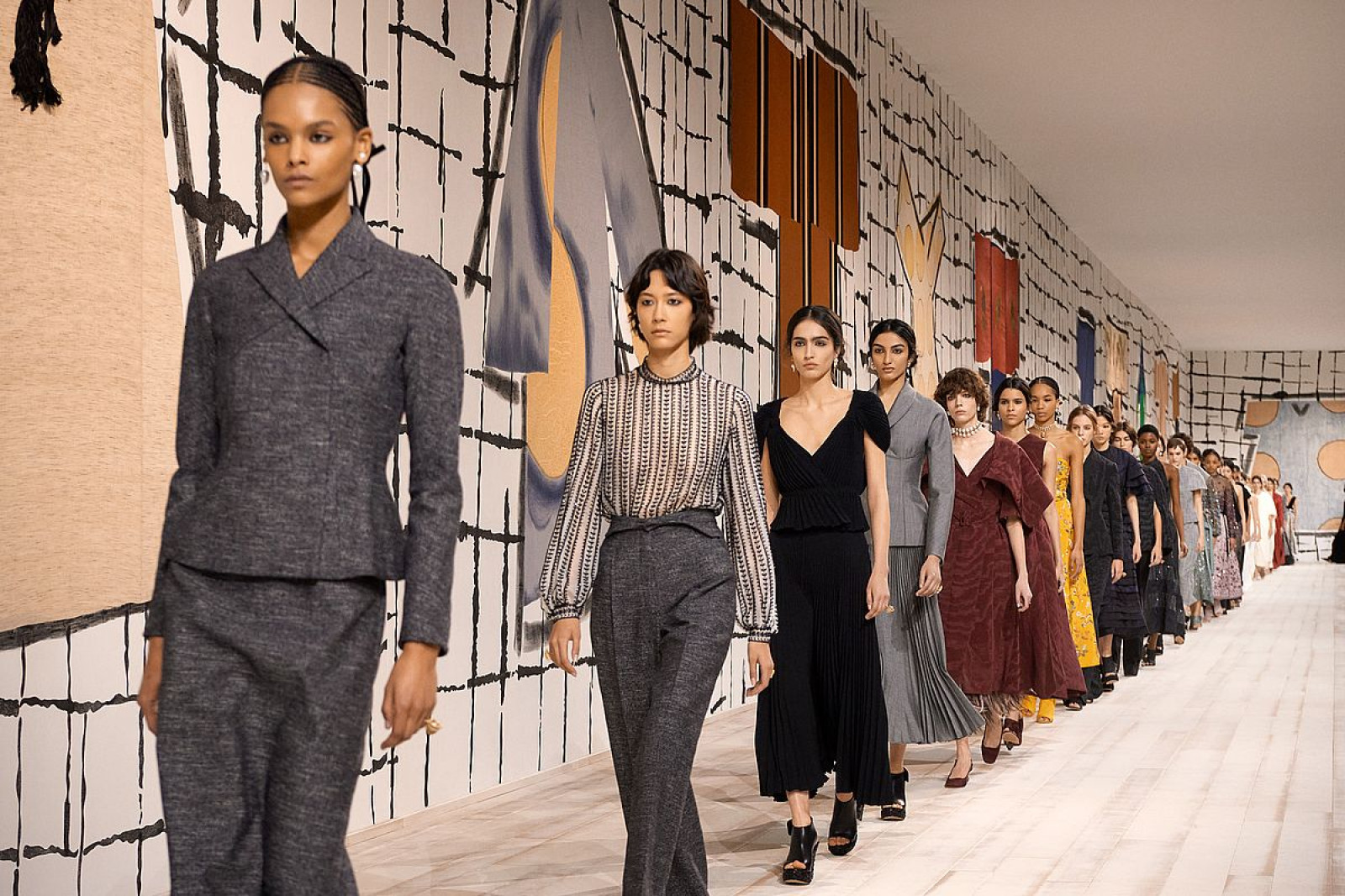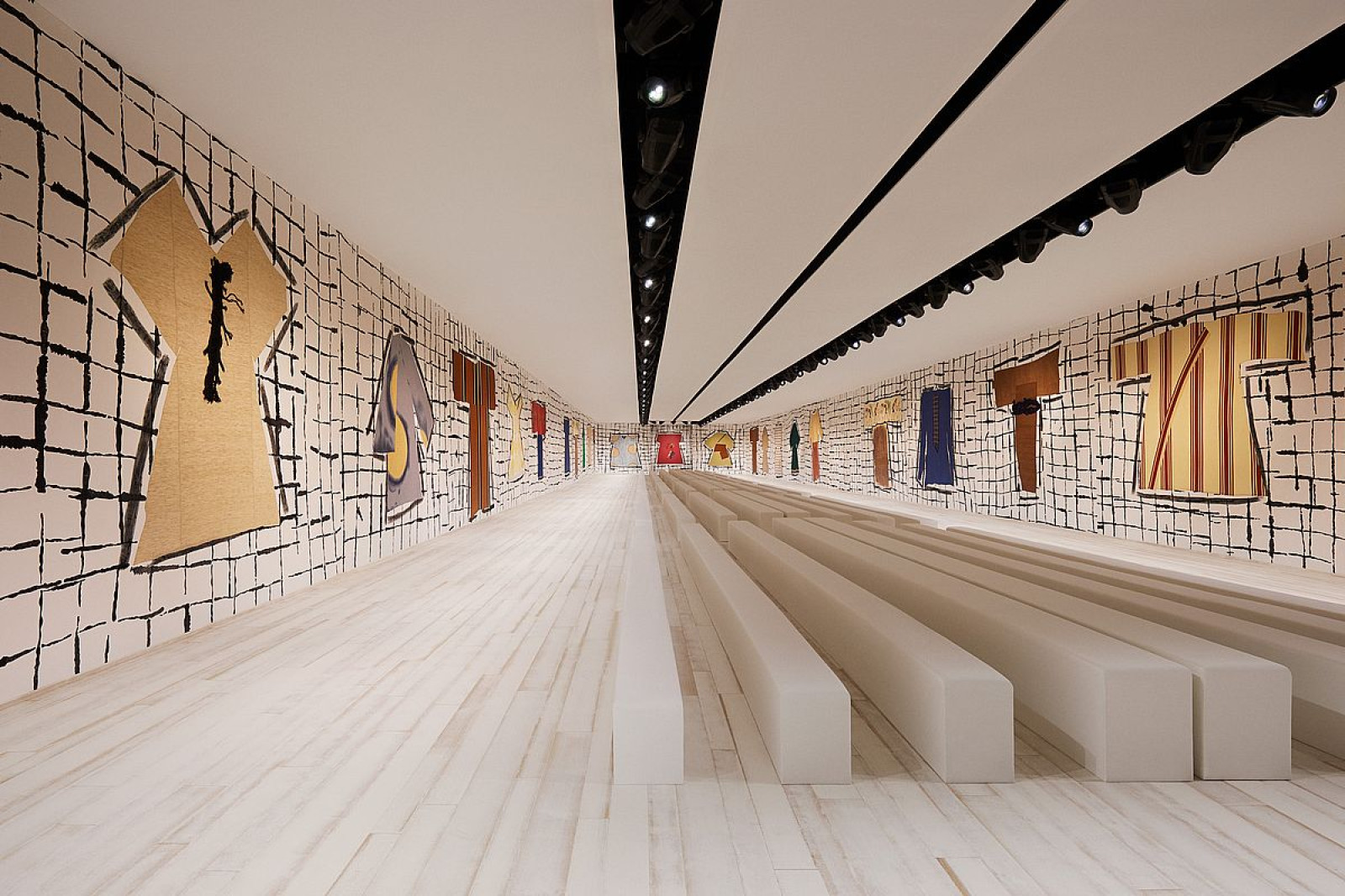
Subscribe
On The NewsSubscribe
confirmed Your subscription to our list has been confirmed.
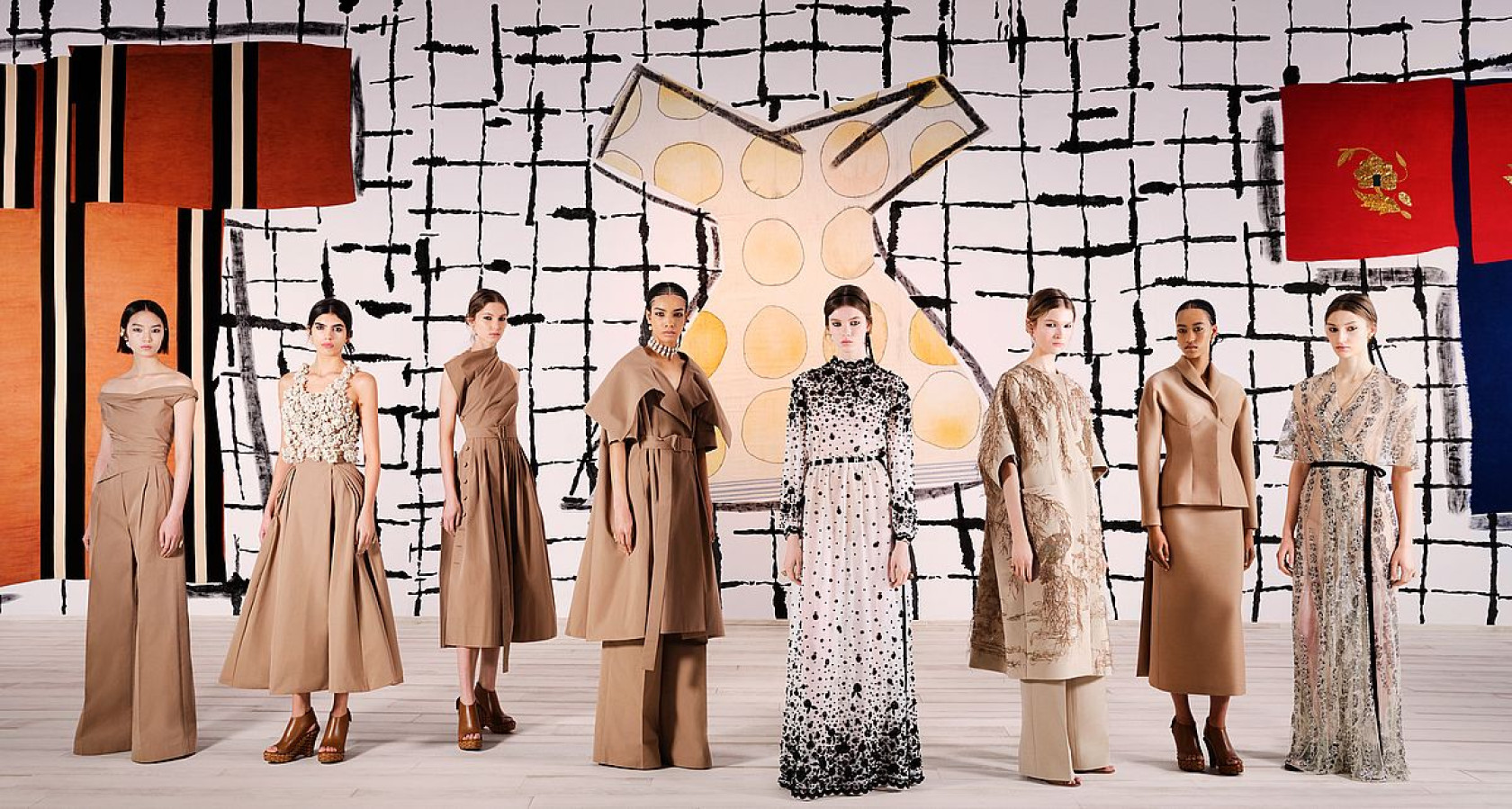
Dior Haute Couture SS2024: Haute couture between aura and reproduction
One of Maria Grazia Chiuri’s notable achievements lies in the fact that she has created her own Dior show standard, removing the theatricals and poetics of her predecessors and replacing them with contemporary art and feminism. And while she remains in the framework of conventional beauty in her collections, she projects all the feminist spirit into the shows’ setup, inviting female artists to do it. This time it consisted of 23 oversized dresses, each of them 5 meters high, which were created by Isabella Ducru, a 92-year-old Italian artist who works with textiles made in traditional weaving techniques. It was called the Big Aura.
The word “aura” immediately refers us to Walter Benjamin and his aesthetic theory, in which “aura” was the most important concept that influenced the entire philosophy of art for the next 100 years. Aura is that spiritual substance that surrounds a work of art and arises at the intersection of its various characteristics: authenticity, its historical context, the place of exposure – and is ultimately associated with that sacred ritual to which any art can trace its roots. It is what the viewer feels when they find themselves frozen in front of a painting or a group of actors. This aura began to crumble in the era of mechanical reproduction of art, the era of photography and cinema, which decisively reached its height in the 1930s, when Benjamin wrote his famous essay The Work of Art in the Age of Mechanical Reproduction. Maria Grazia Chiuri directly applies this concept to haute couture, which is unique clothes made for the unique body of a particular person and executed with ultimate excellence. As Maison Dior notes in its communications, there is an aura-like dimension of haute couture: a powerful experience that is not only contemplative, but also performative.
The défilé began with a sound of female voice repeating the words “weft and warp” over and over. The models in all-cotton looks that had the classical color of trench coats and hinted at their shape came out to the sounds of the voice. As more and more models came out, the shapes of the trench were gradually dissolving into embroidery and long skirts to become Dior New Look dresses made out of watered silk also known as moiré. In this way cotton, not the most traditional fabric for couture, has been joined with moiré, one of the most noble and expensive fabrics. Cotton and moiré became the weft and warp of Dior haute couture collection PE24, creating the supportive framework that Chiuri herself describes as “a conversation between two fabrics that are apparently in contradiction.” And the pillar of the collection is the La Cigale moiré dress from AH1952-53 Dior archive collection which the Harper's Bazaar described in its September 1952 issue as made of "grey moiré, so heavy that it looks like a pliant metal.”
This is the first time that Maria Grazia Chiuri has used moiré and you can see that she was fascinated with its styling potential as well as the possibilities of the La Cigale silhouette, with its external simplicity and internal complexity of the cut and structure. The result of this experiment is a series of moiré dresses in magnificent shades from burgundy to the l’heure bleue, adapting the splendour of 18th century moiré court gowns and the perfection of Dior's New Look to the needs of Dior’s contemporary haute couture clientele. But our absolute favourite was a loose chartreuse gown in shades of amber with a draped shoulder. It didn’t remind us of either the French courtiers or the New Look, but its aura, even if did not make us freeze, literally called out to us from the podium thanks to its relevance. Аs Benjamin said, “to perceive the aura of an object we look at means to invest it with the ability to look at us in return.”
Text: Elena Stafyeva
Images: Dior\ © Adrien Dirand, © Laura Sciacovelli

